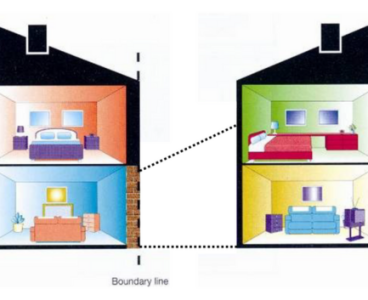|
Generally, you don’t require your neighbour’s consent to build on your land. However, as a result of the Party Wall Act 1996 (the Act), you need consent if your proposed work is close to a party wall or involves building against a party wall.
Definition of a party wall
There is no single definition of a party wall. It can mean a wall jointly owned by neighbours straddling a boundary. Alternatively, it can mean a wall owned by one property owner is subject to certain rights in favour of their neighbour. A party wall might form part of one or more buildings, such as terraced or semi-detached houses or a party fence wall standing on a boundary but not attached to a building, eg a garden wall. More information on the types of party walls is available here.
Purpose of the Party Wall Act
The purpose of the Act is to prevent your proposed work from undermining or causing other damage to the wall.
Building against a party wall
Common examples of building against a party wall include:
Type A party wall*

Here, the proposed extension abuts a Type A party wall (i.e. where the jointly owned wall straddles the boundary).
Type B party wall*

In this example, a proposed extension abuts a Type B party wall (i.e. where the wall is entirely on one neighbour’s property).
Check out our main Party Wall Disputes page. |
Boundary wall rules
Before building against a party wall, the boundary wall rules contained in the Act require you to:
- serve a party wall notice on every neighbour affected not less than two months before commencing work and
- once you have served notice, you must begin work within a year.
Once you have served notice, your neighbour(s) may either:
- give consent in writing to the works; or
- object in writing to the works; or
- do nothing.
If they consent, work can begin, subject to any or all of the following that apply:
- planning permission;
- building regulations approval; and
- listing building consent.
If they object or do nothing, a dispute arises. See our main Party Wall Disputes page for the procedure if a dispute arises.
Building within 1m of boundary
There’s a common misconception that different rules apply if you are building within 1m of a boundary than if the work is further away. However, the Party Wall Act does not refer to this alleged rule.
* These diagrams are reproduced under the terms of an Open Government Licence v3.0.

